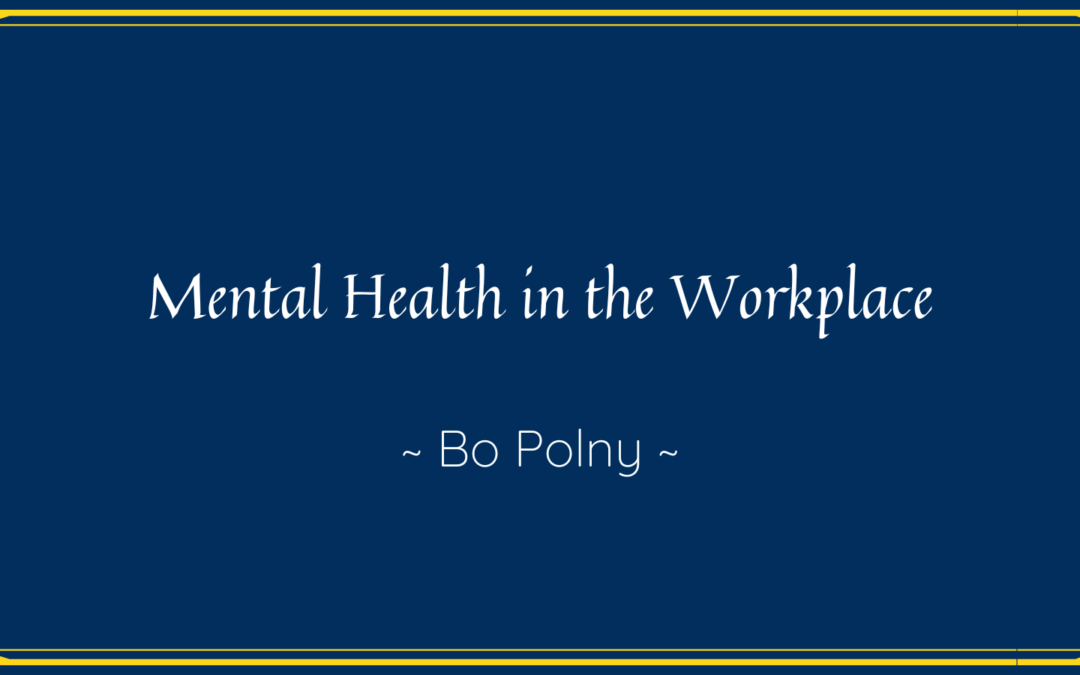Around 264 million people globally suffer from depression, which is one of the main causes of disability. Many of these individuals also have anxiety disorders. A recent study conducted by the WHO estimated that the global economy loses around $1 trillion annually due to the effects of these disorders.
Being unemployed is known to increase the risk of suffering from mental health problems. Being in a negative work environment can also lead to various health issues, such as absenteeism and harmful substances use. Having a supportive environment can help people with mental disorders improve their productivity and reduce their risk of experiencing these issues.
This information sheet aims to help people with mental disorders and employers identify the various factors that can affect their well-being in the workplace. It also covers other difficulties that can be caused by work.
Aside from being physically and mentally ill, the working environment can also affect the mental health of people. Some of the factors that can affect an individual’s well-being include the interactions between the management and the employees, the availability of support, and the skills and competencies of the workers. For instance, someone may have the necessary skills to complete a task, but they may not have the necessary resources to do so.
The factors that can negatively affect an individual’s mental health include the lack of control over their work environment, poor communication, and low levels of support. Other issues such as unclear goals and procedures can also affect an individual’s well-being.
Job risks can additionally be categorized into different categories, such as the likelihood of experiencing a high workload or not being able to complete tasks properly. Some positions may carry a higher personal risk, which can affect an individual’s mental health and increase their risk of experiencing substance abuse or depression. In certain situations, the lack of social support and team cohesion can additionally lead to an increase in risk.
One of the most common causes of stress in the workplace is psychological harassment and bullying, which are also known as mobbing and bullying, respectively. These types of threats can have negative effects on the health of workers. They can lead to reduced productivity and increase the turnover rate of employees.
A healthy work environment can be achieved through the development of policies and legislation that are geared toward improving the conditions of workers and managers. According to a 2014 report by the European Union Compass, a healthy workplace is a place where employees are protected from various threats and are encouraged to contribute to the overall well-being of the company. A three-pronged approach can be used to address these issues.
One of the most effective ways to prevent mental health issues in the workplace is by developing a positive work environment. This can be done through the promotion of the positive aspects of the job and the development of effective mental health policies.
The World Economic Forum also provides a guide that can help organizations create a healthy work environment. It can help them identify the various factors that can affect their employees’ well-being.
To promote a healthy work environment, it’s important that employees are aware of the various factors that can affect their mental health.
Learning from the actions of other companies can also help organizations create a healthy work environment. This can be done through the development of policies and legislation that are geared toward improving the conditions of workers and managers.
Understanding the various factors that can affect an employee’s mental health is also important in order to develop effective policies.
This can be done through the development of policies and legislation that are geared toward improving the conditions of workers and managers. They can also help prevent mental health issues from happening in the first place.
One of the most important factors that employers can consider when it comes to developing effective mental health policies is the involvement of their staff members and stakeholders.
The World Health Organization has also created a series of tools that can help organizations and workers identify the various factors that can affect their well-being. These tools are part of the organization’s Mental Health Gap Action Programme. In addition to providing information on the signs of mental health problems, the program additionally offers technical assistance for the management of drug and alcohol use disorders.
The organization is also testing self-help tools that can help individuals manage their anxiety and other mental health issues. These tools are designed to help people in low- and middle-income countries.

